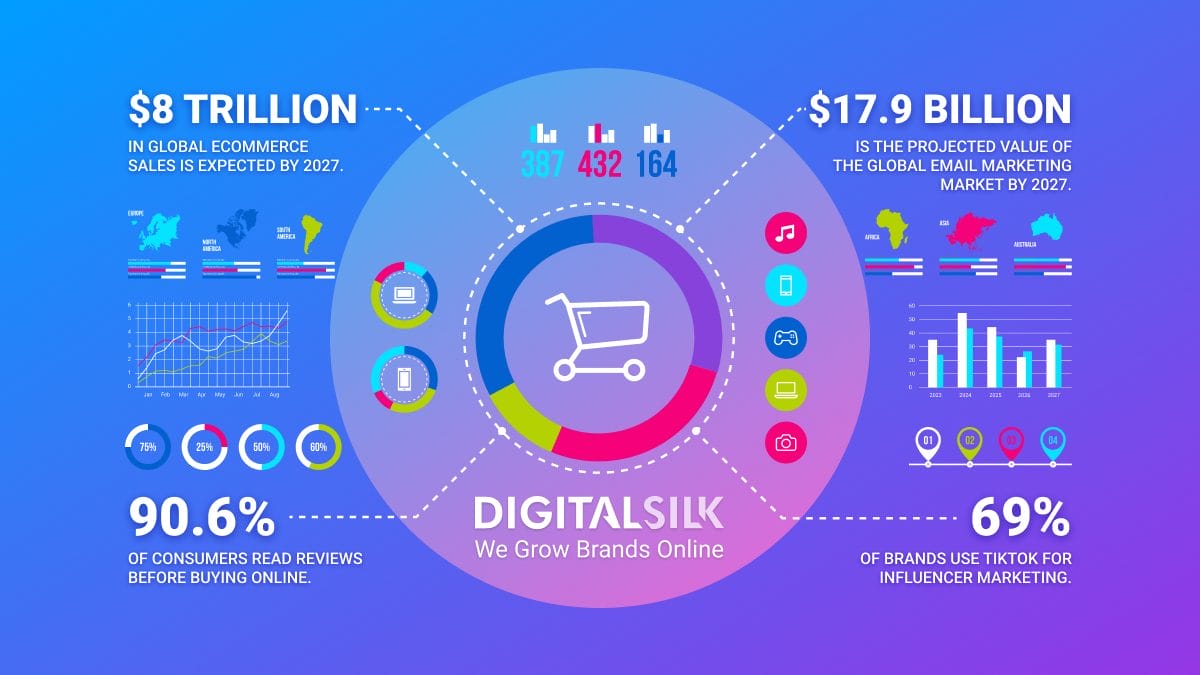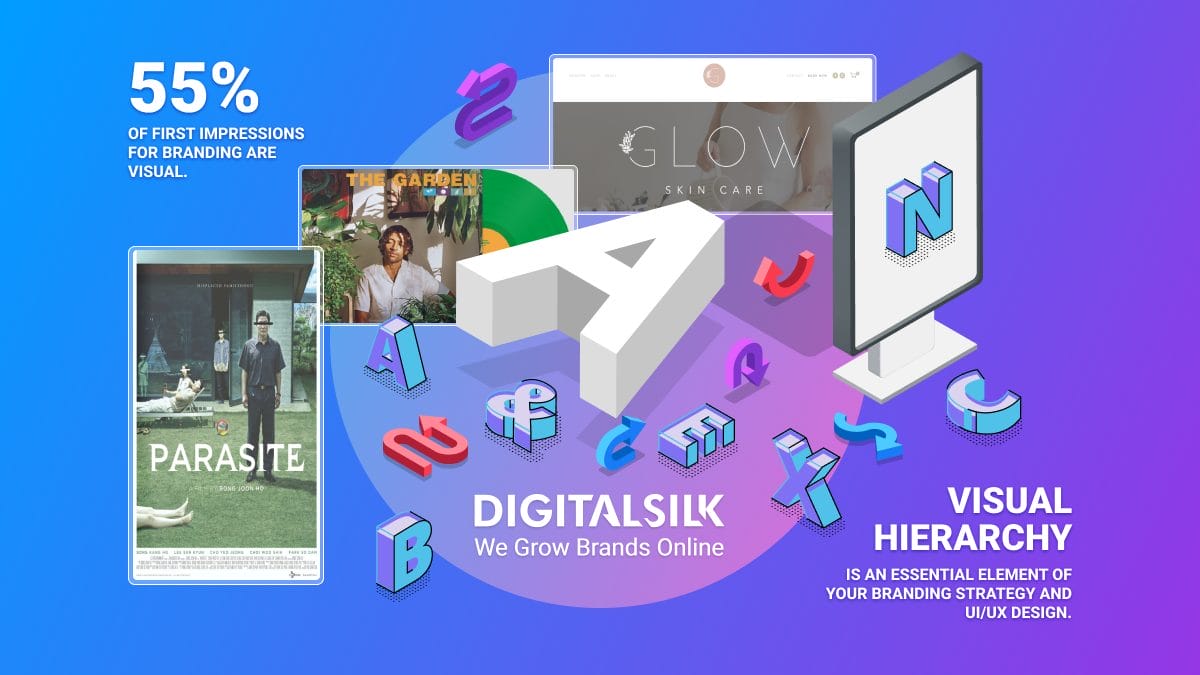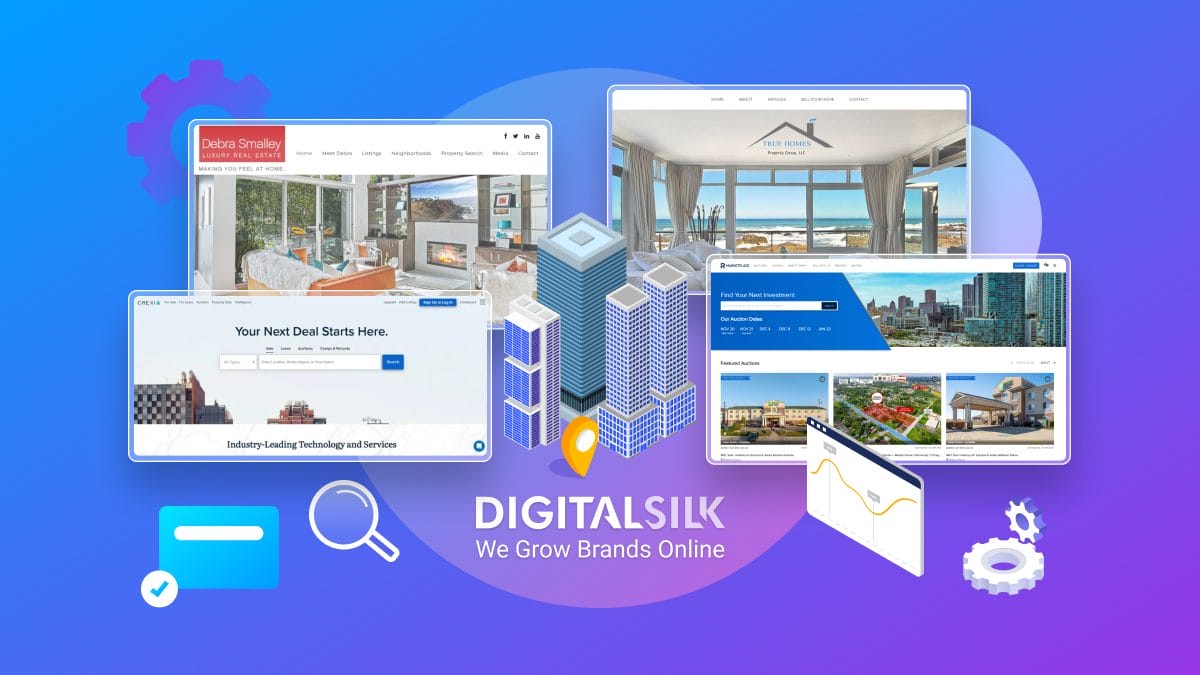The global stock images market is expected to reach $12.2 billion in 2032, almost double its 2022 value.
It’s a vast increase underpinned by businesses who continue to choose stock photos as an instantly accessible and low-cost option for their visual content.
But how do these images compare to custom-provided real photos? And which should you choose for your digital marketing campaigns?
We compare stock photos vs. real photos below, analyzing the benefits and problems of each before providing our final verdict.
We deliver custom digital strategies. Request a Quote
What Is The Difference Between A Real Image & A Stock Image?
A real image is a unique picture taken by you or a professional photographer for use in your branding or marketing materials. A stock image, on the other hand, is a pre-existing commercial photo available for general use by multiple businesses.
Real images provide a bespoke angle to photography, allowing your business to create memorable visuals that align with your visual identity.
Meanwhile, stock images can be purchased or found for free on online databases like Shutterstock or Getty Images. These images have varying royalty – or sharing – rights and can be purchased or downloaded by multiple businesses or individuals.
What Are The Benefits Of Using Stock Photos In Digital Marketing?
Using stock photos across your digital marketing efforts has numerous benefits, especially for brands with lower budgets and shorter timelines.
In summary, stock photos are:
1. Affordable
Stock photos are unlikely to eat into your business’ marketing budget.
According to a study conducted by Venngage, just 12.4% of marketers spend the highest portion of their visual content budget on stock photos.
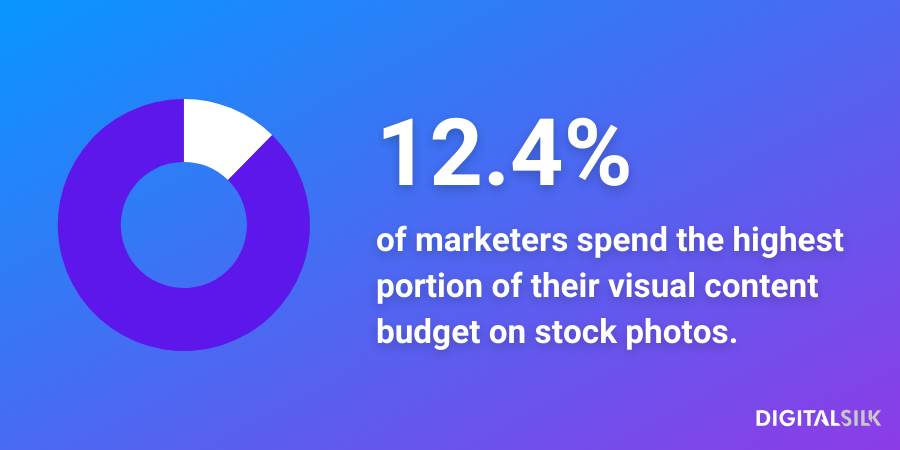
Providers of stock imagery can set lower prices than the average photographer because they are repeatedly charging for the same photo. This makes it easier to cover their sunk costs with lower prices, making professional stock photos more affordable.
Depending on how often you wish to use stock images in your digital marketing campaigns, your business can choose between a range of pricing options:
- Free to use: Some stock images are free to in the public domain or under a Creative Commons license, requiring only attribution to the original author. These can be found on sites like Unsplash and Pexels.
- One-time purchase: Many stock image libraries offer one-time purchases of individual photos. Prices can vary – Shutterstock, for example, charges between $0.22 and $14.50 per stock image.
- Ongoing subscriptions: You can subscribe to online stock image platforms to access a database of images. As an example, Shutterstock’s subscription plan can cost as little as $29 a month for 10 image downloads.
- Custom stock photography plans: For a higher price, you can become the sole user of a bank of stock images by enrolling in a custom stock photography plan with certain companies like CreateHER Stock.
2. Easily Accessible
A stock photo can be found, purchased and used instantly, at any time of day.
This removes the need to find an experienced photographer for your website, social media or digital campaigns.
It also means you don’t have to source, pay for and set up expensive tools and software, a process that, according to Venngage’s data, 56.2% of marketers claim takes up most of their visual content budget.
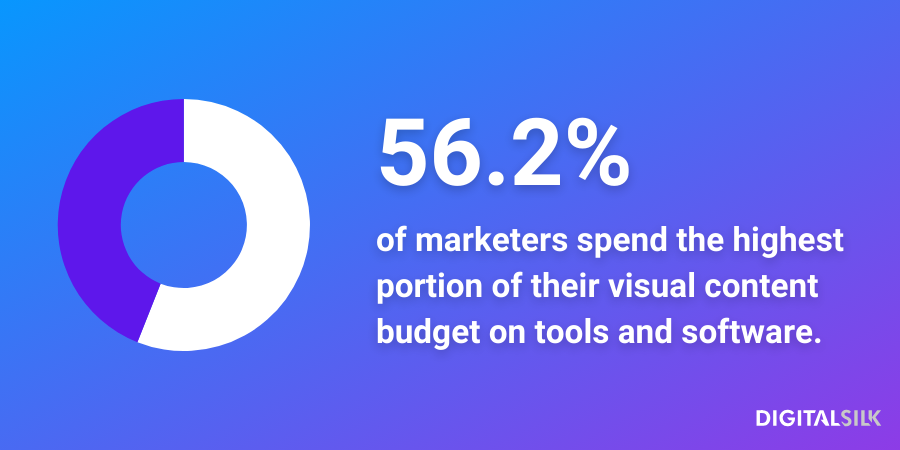
In turn, using stock images is an effective choice if you are a smaller business without the skillsets in your team or budget to hire externally.
3. Time Savers
Stock images can be found and downloaded in minutes.
Whether searching an image database or using Google images, you can instantly collect pictures related to your content’s theme.
Look at the video below, for example. It took us just 19 seconds on Shutterstock to find a stock image related to adding photos on a web design.
Many image libraries also offer photo editing features, bypassing the need for a professional photographer and editor.
In turn, you can produce a level of custom stock photography in a fraction of the time taken to brainstorm, take and edit real images.
We’re specialists at growing brands online. Schedule A Consultation
What Are The Problems Of Using Stock Photos In Digital Marketing?
Stock photos may not be the best choice for your business for several key reasons.
These include that fact that stock photos:
1. Lack Originality
Due to its available nature, brands that use stock photography can appear to lack originality.
Multiple brands can use the same image for different materials, diluting the uniqueness of each.
At best, your brand can appear lazy and uncommitted to your purpose with stock imagery in your social media posts or blog content.
At worst, a customer may see a stock image on your product promotion or webpage that they have seen elsewhere and assume you are a counterfeit brand.
This can damage your brand reputation and harm sales.
To tackle this issue, your brand can use custom stock photography – a service that gives you sole ownership over a pool of stock images.
However, this option is costly and doesn’t compare to the flexibility of real images taken in-house.
2. Have Limited Customizability
Stock images cannot be planned and tailored to your exact visual brief or identity because they are often used in many different settings.
Without guiding the style, setting and goals of the picture, they are not always able to successfully communicate what your brand stands and what message you hope to get across.
This can result in an underwhelming picture that fails to connect with your target audience and achieve your conversion targets.
In turn, 39% of respondents to Venngage’s survey reported stock images as their worst performing visuals – higher than any other type.
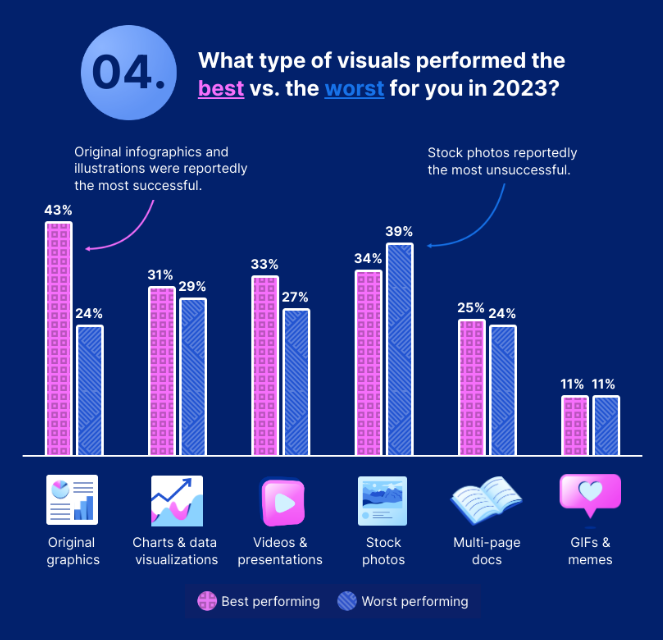
3. Face Copyright Issues
Stock images don’t have a one-size-fits-all approach to copyright licenses.
These licenses can be confusing, leaving you unsure how and where you can use the images you have bought.
Not following copyright law can result in legal action being taken against your company, so it’s important to consider what royalties you have before publishing any stock visuals on your digital marketing collateral.
Cases of copyright infringement are not uncommon, with 57,287 individual cases being reported over a 12-month period in the U.S. alone.
Some common licenses to know include:
- Public domain: Not protected by copyright and can be used freely for any purpose without permission
- Royalty-free (RF): Allows unlimited use for a one-time fee, with some usage restrictions
- Rights-managed (RM): Offers specific, customized usage rights for a negotiated fee
- Extended license: Adds extra usage rights to a standard license, often for commercial purposes
- Editorial use license: Permits non-commercial use, typically for news articles or a blog post
- Creative Commons licenses: Varying permissions for commercial and non-commercial use, with specified conditions.
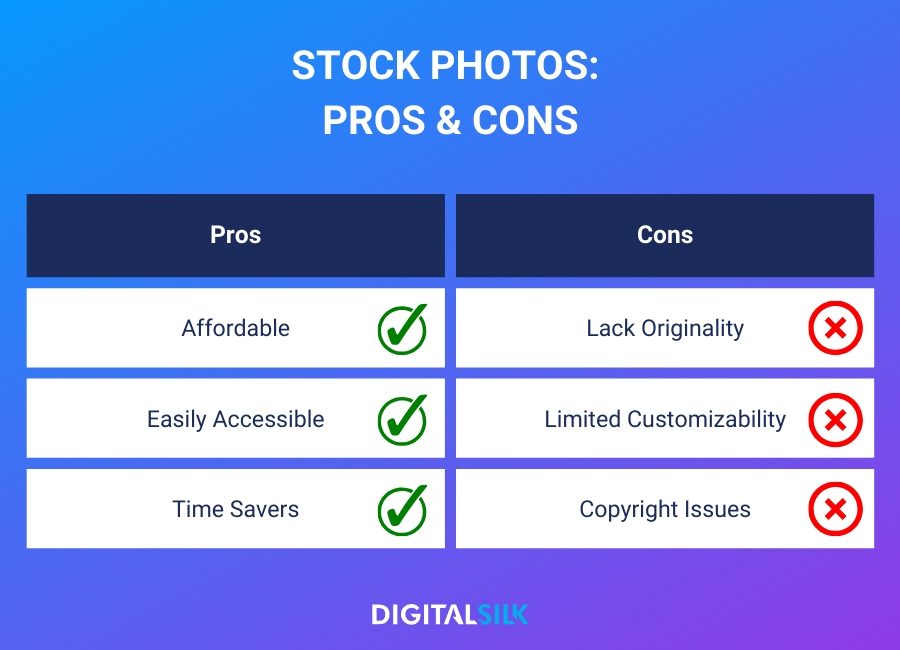
What Are The Benefits Of Using Real Photos In Digital Marketing?
By choosing to include real, custom photos in your digital marketing strategy, you can produce designs that benefit from:
1. Authenticity & Uniqueness
A real, original photo has been crafted with your exact intentions in mind. From the initial planning to the post-production editing, it has been shaped by your brand identity.
This tailor-made approach to photography is vital as 88% of consumers say authenticity is important when deciding which brands to support and do business with.
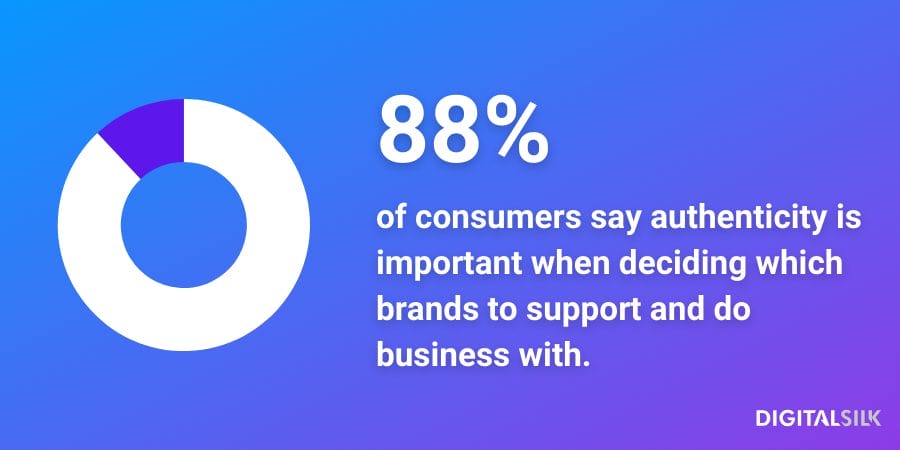
Whether on an eCommerce product page, whitepaper design or pop-up ad, real and bespoke images work to drive your brand’s authentic visual identity in a way that captures attention and resonates with your audience.
2. Complete Customizability
Taking photographs on your own, or hiring a professional photographer or agency, gives you complete creative control over your digital marketing designs.
Take this recent Nike campaign, for example:
Collaborating with a professional photographer Petra Collins, Nike uses custom imagery to advertise its new Air Max Dn sneakers.
Collins uses customized photos to highlight the “maxxed out comfort, energy and motion” of the Air Max Dn’s by editing models into impossible places while wearing the sneakers.
The outcome is a social media post that boosts product recognition, reaffirms Nike’s identity as exciting innovators and provides a one-of-a-kind campaign.
3. Emotional Connectivity
64% of consumers want brands to connect with them.
According to Sprout Social, customers attribute this feeling of connection to:
- Trust in the brand
- An alignment of values
- An understanding of their needs
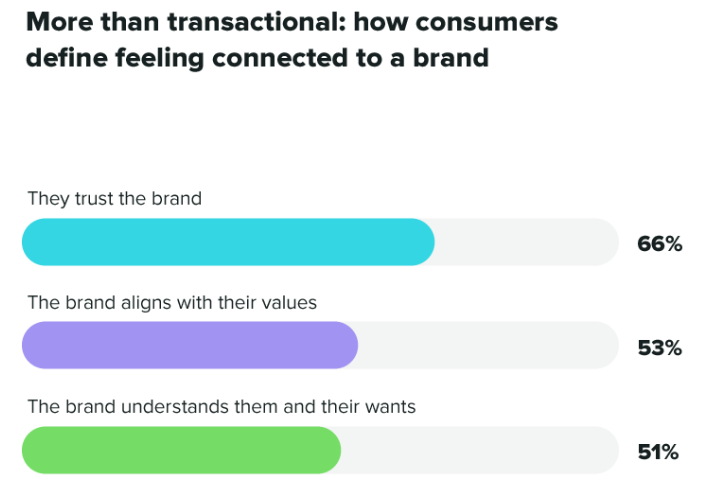
Your digital marketing visuals can inspire these feelings only if they are unique and targeted to your audience.
Real photography can appeal directly to your customers’ pain points and desires while showcasing your values to build trust.
This can lead to a deeper connection and relationship with your audience or online shoppers, boosting both initial conversions and eventual brand loyalty.
We’re specialists at growing brands online. Schedule A Consultation
What Are The Problems Of Using Real Photos In Digital Marketing?
Real photos may not be the best choice for your brand, due to their:
1. Cost & Time-Intensiveness
From finding and hiring a professional photographer to subscribing to post-production editing software, using your own photos is time consuming and costs money.
Even freelance photographers on cheaper platforms like Upwork will set your business back up to $65 an hour or higher.
This can cause problems if your marketing department has tight deadlines or budgets to meet.
Venngage’s study found that 32.4% of marketers already expect to spend at least half of their budget in 2024 on visual content, such as videos, animations and editing software. Using real photos can cause this to increase further.
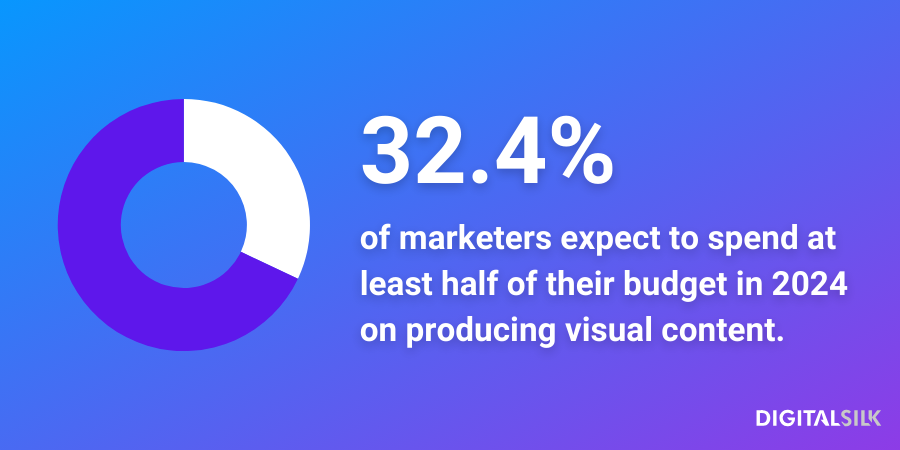
2. Potential Inconsistency
Producing engaging visual content on a regular basis is one of the biggest challenges for all types of brands.
43.8% of marketers consider it one of the biggest struggles they face, according to Venngage.
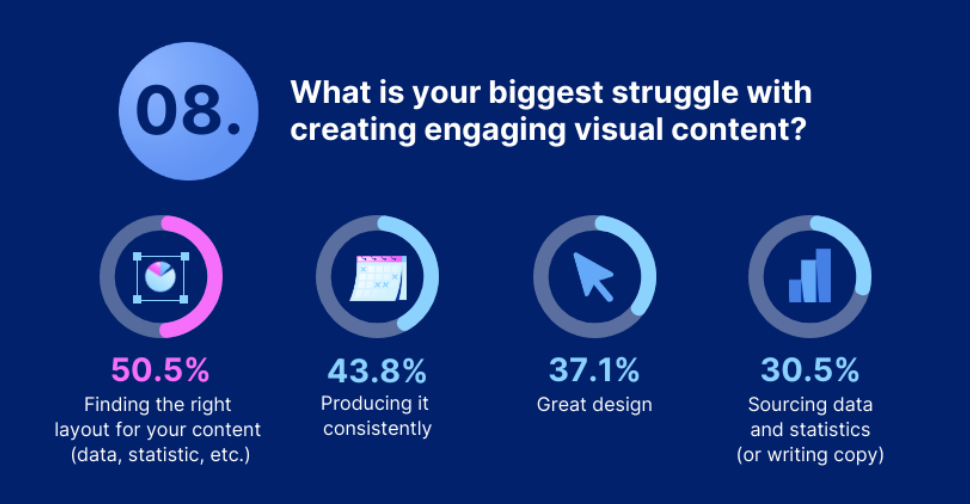
While real photos will produce more valuable visuals for your marketing channels, it’s difficult to deliver a high volume of top-quality photos.
From sourcing photographers to setting up subjects, each element can cause potential logistics problems that don’t arise when using realistic stock photos.
Working with different photographers, agencies or equipment can all also impact the consistency of the style and outcome of your real photos.
This can become apparent if two images clash when placed next to one another on a webpage or social media board.
3. Lack Of Scalability
Taking your own real photos can limit the number of images that are available to implement across your digital brand touchpoints.
While Shutterstock alone has millions of readily available images, real photos require physical settings and subjects to be on demand for each picture.
This can cause a bottleneck for an eCommerce store looking to upload thousands of new products to its inventory or a restaurant hoping to launch an online delivery service with a quick turnaround.
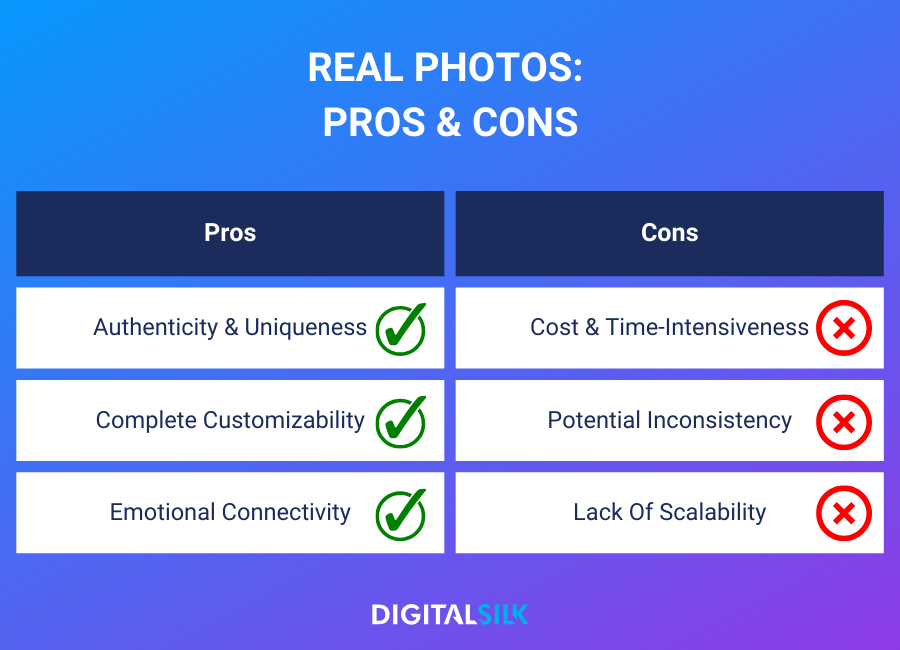
Verdict: Should You Choose Stock Photos Or Real Photos?
For the best results, your brand should use real photos in your digital marketing materials.
However, this decision can be influenced by your business’s specific needs, budget, brand identity and digital strategy.
While stock photos offer cost-effective, easily accessible and time-saving options, real photos provide authentic, customizable visuals that resonate with your audience and drive conversions.
This said, real photos also require investment in terms of time, money and effort. They may also pose challenges in terms of consistency and scalability that make them unviable to certain businesses.
For a quick breakdown of the pros and cons of each, see the table below:
| Pros | Cons | |
| Stock Photos | – Affordable – Easily Accessible – Time Savers | – Lack Originality – Limited Customizability – Copyright Issues |
| Real Photos | – Authenticity & Uniqueness – Complete Customizability – Emotional Connectivity | – Cost & Time-Intensiveness – Potential Inconsistency – Lack Of Scalability |
Ultimately, if your business has the budget, investing in real photos can provide a competitive edge by developing a distinctive visual identity, fostering deeper connections with your audience and enhancing brand authenticity.
We deliver custom digital strategies. Request a Quote
Create Your Digital Strategy With Digital Silk
Making the decision of stock photos vs. real photos is just one aspect of your digital strategy.
A successful digital marketing campaign that converts across channels needs to consider the end-to-end process, from audience analysis to lead generation, creative design to results tracking.
That’s why at Digital Silk we assign a senior-level digital strategist to every project.
This gives you access to an experienced industry professional who will guide you through each important decision and towards measurable growth.
As a full-service web design agency, our in-house team delivers a range of solutions to bring your digital strategy to life:
- Custom web design
- Custom web development
- Digital marketing
- Social media marketing
- Branding strategy and digital branding
Whether planning or delivering your digital strategy, we ensure three core values are followed at every stage:
- We take project ownership
- We act with total transparency
- We deliver measurable results
Contact our team today, call us at (800) 206-9413 or request a quote via the form below to tell us about your digital project requirements.
"*" indicates required fields





